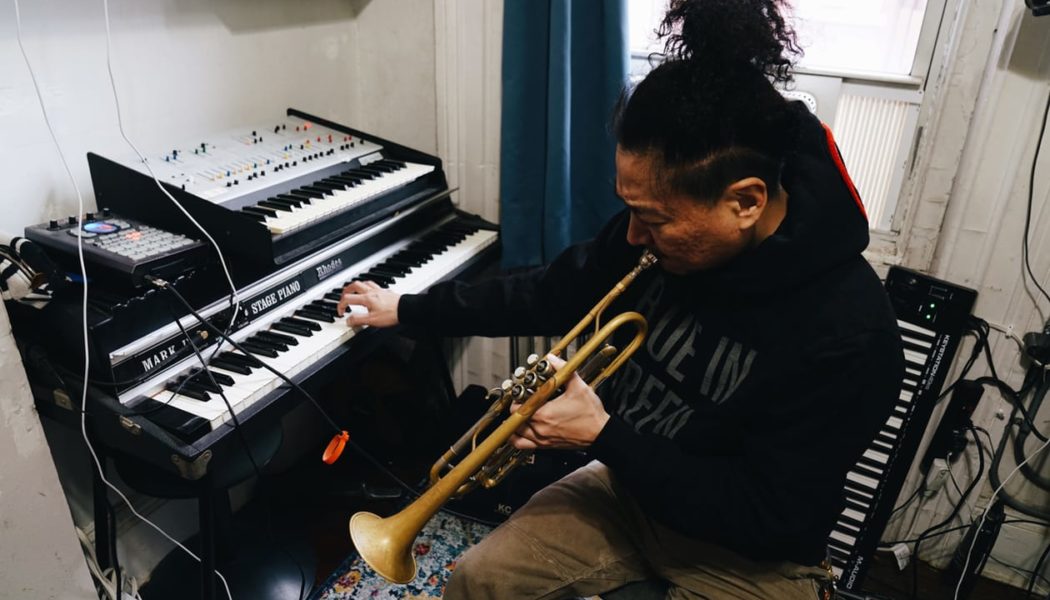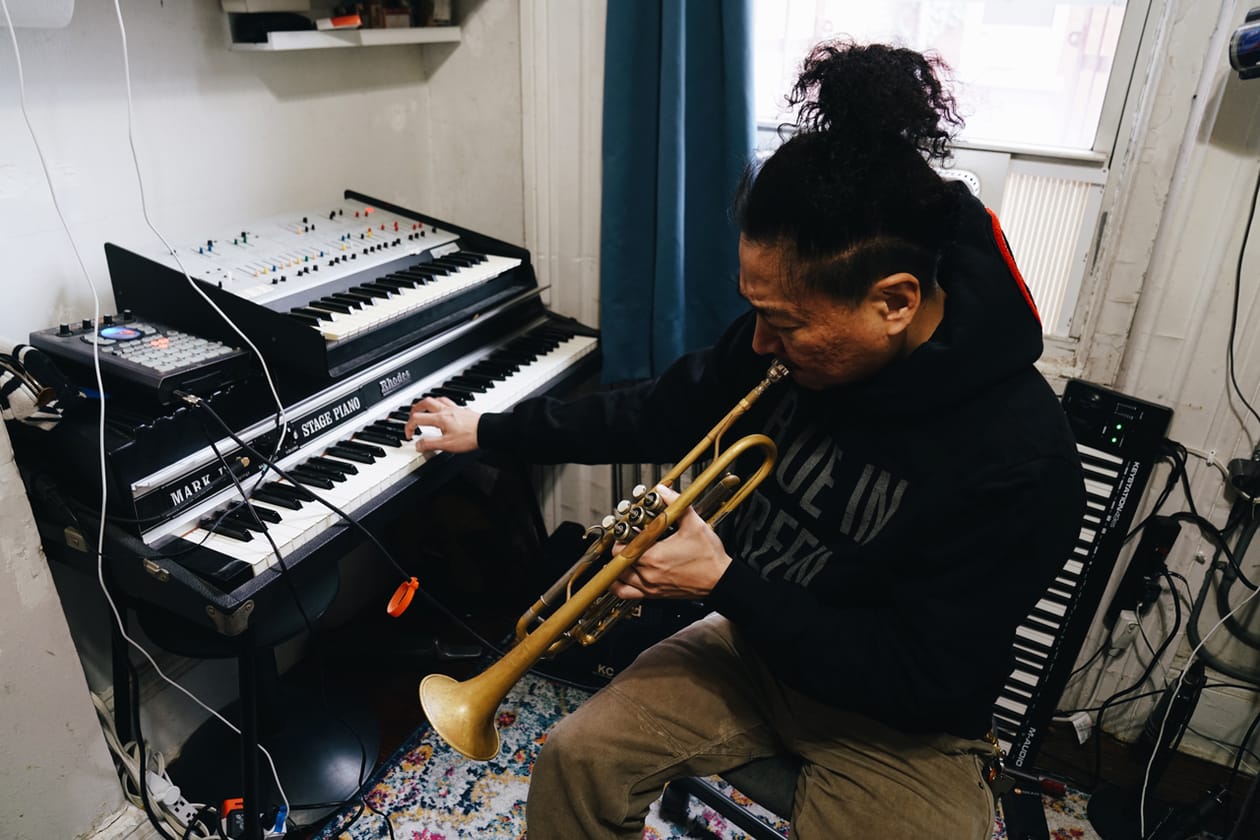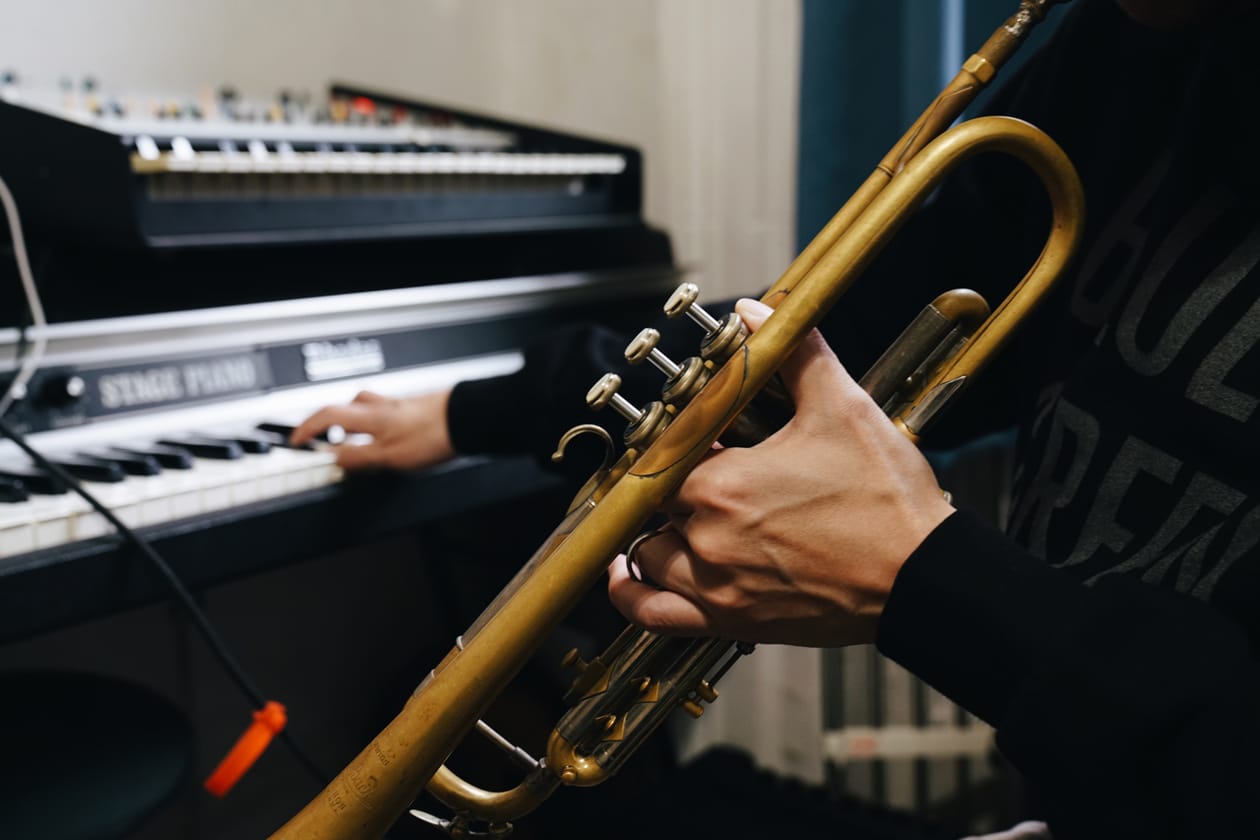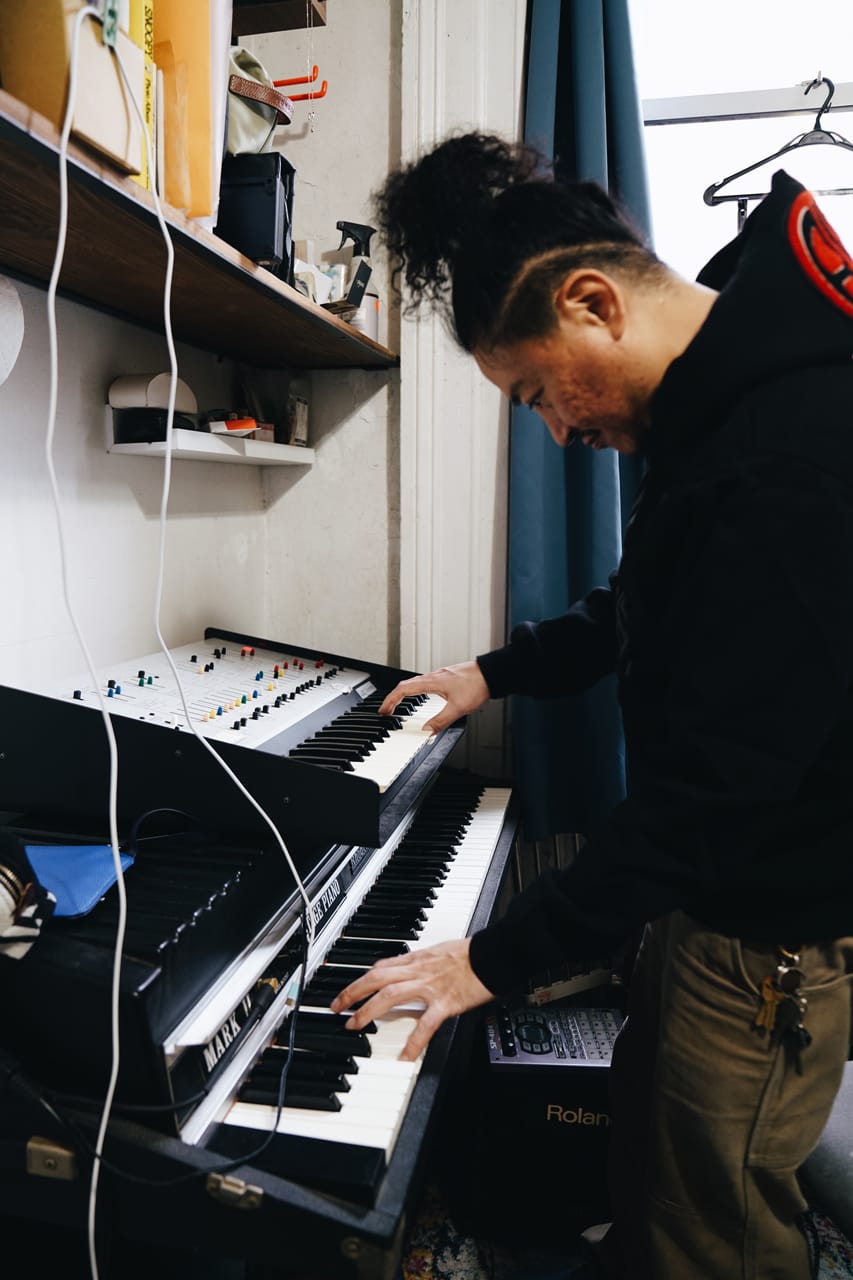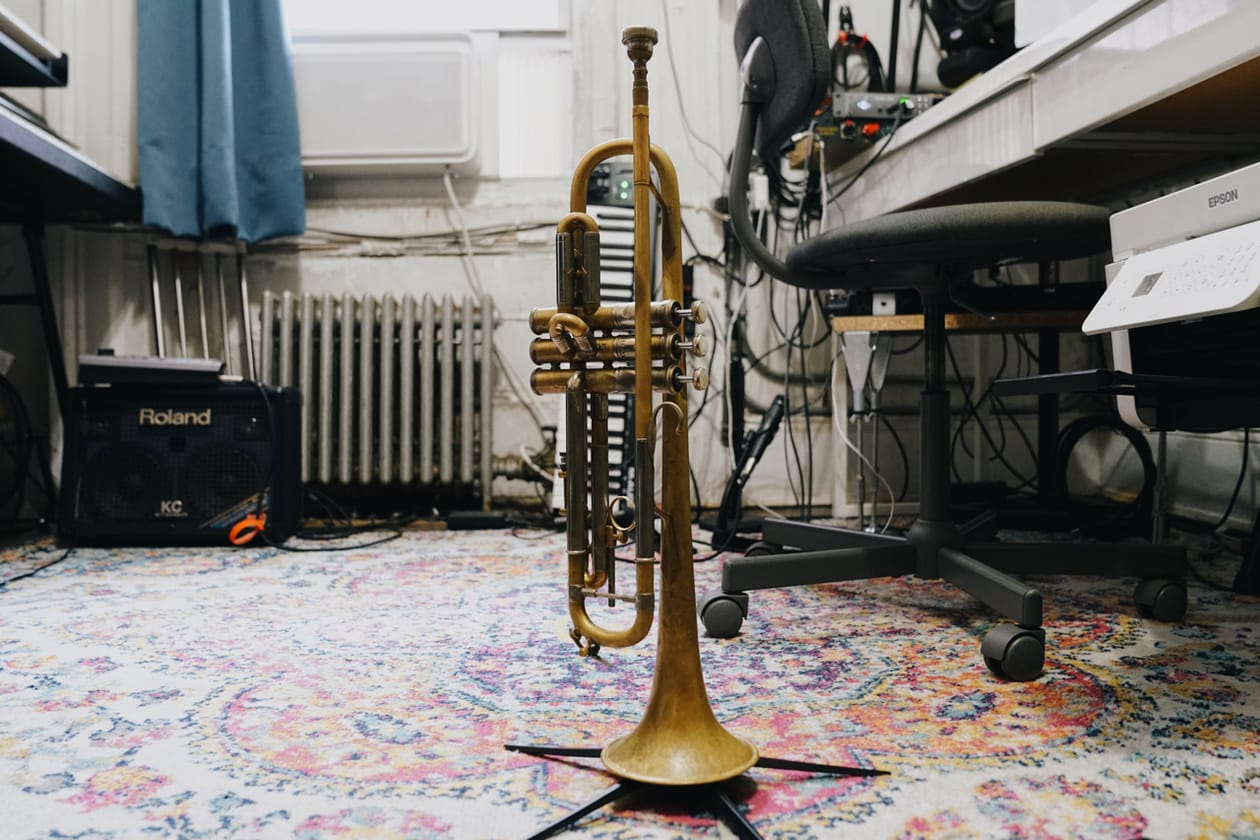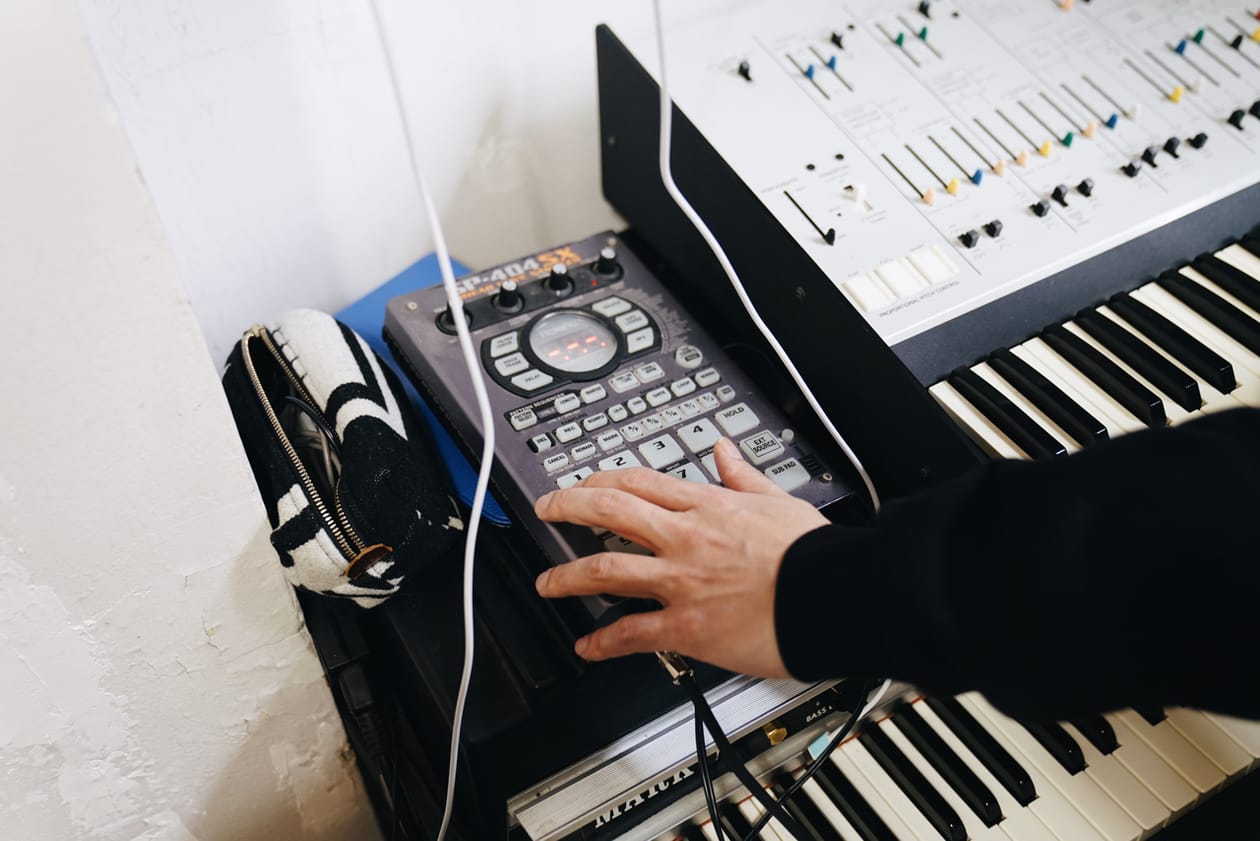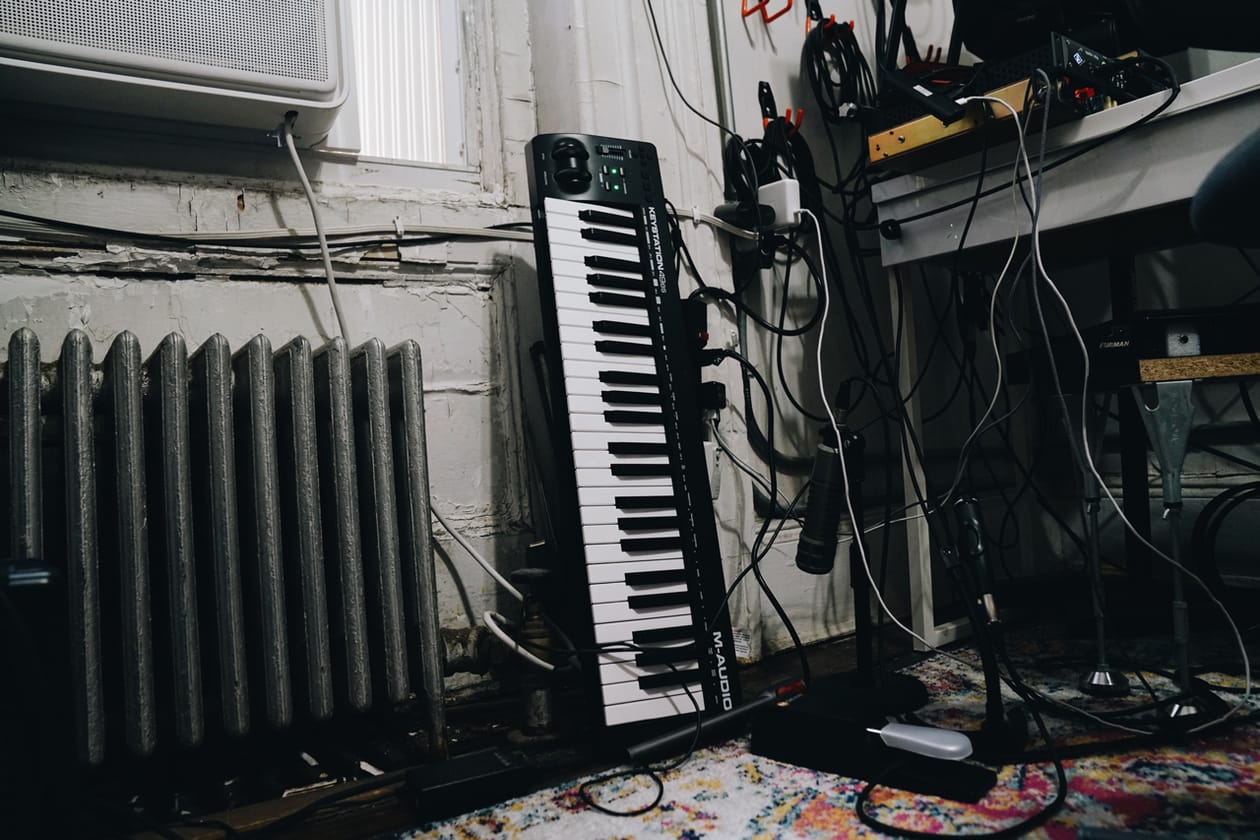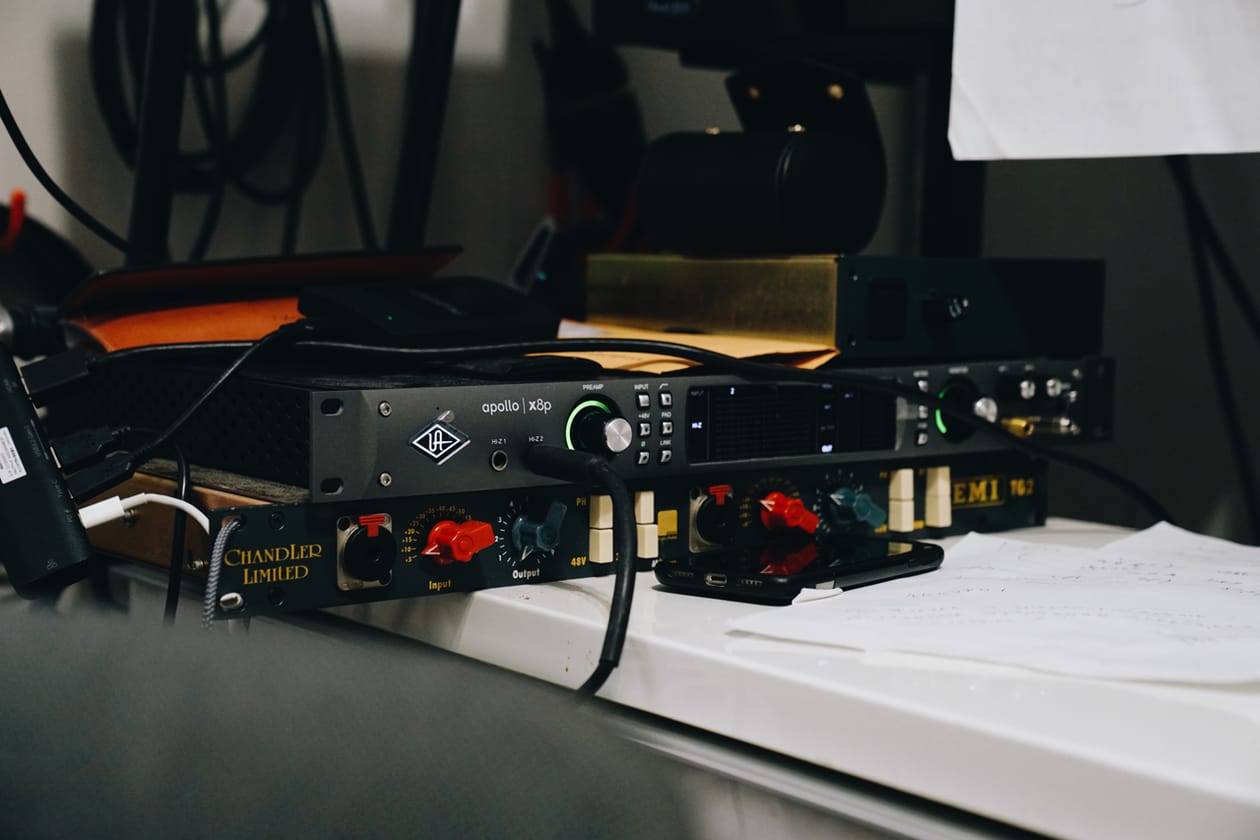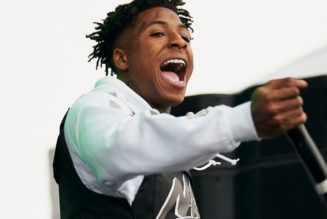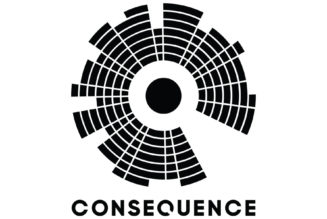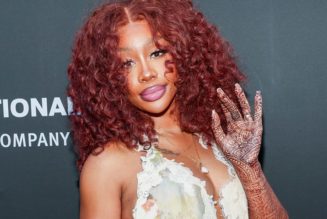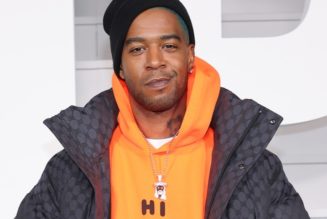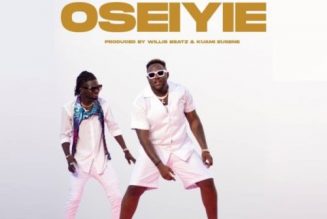It’s a rainy January day in Brooklyn, and Takuya Kuroda has been afforded a brief respite from his packed schedule. With space to think, he gets to reminiscing. “It’s funny: I’ll still get DMs saying ‘I love your song! It’s so fresh!’” the trumpeter says, referring to the version of Roy Ayers Ubiquity track “Everybody Loves the Sunshine” that he reimagined alongside vocalist Jose James. “I’m like ‘It’s not my song! … It’s amazing that my arrangement of that song can open so many doors for people.”
Kuroda is far from nostalgic. Miles Davis, one of his significant trumpet influences alongside Clifford Brown and Freddie Hubbard, once said, “If anyone wants to keep creating, they have to be about change.” That mindset has also been at the forefront of Kuroda’s creative output over his nearly two-decade career as a bandleader, composer, side man and more.
But on this occasion, he’s got good reason to reflect. 2024 marks the 10th anniversary of Rising Son, the 2014 album he released on Blue Note that garnered him vast notoriety in the jazz world and made him the first-ever Japanese artist to cut a record for the label. It’s also being reissued on vinyl for the first time since its original pressing (which now goes for upwards of $500 on Discogs), as he regained the rights to the album after Blue Note’s 10-year exclusivity period on it expired.
Across the eight-track project, which includes the aforementioned “Everybody Loves the Sunshine” cover, Kuroda established himself as a force to be reckoned with. He expertly stirs his various influences, from growing up as a jazz-obsessed teen in Ashiya, Japan to his move to New York City for jazz studies at The New School – a period eventually landing him in both James’ band and the Brooklyn Afrobeat collective Akoya. His crisp, light-but-not-airy trumpet playing both soars above and weaves itself through everything, including the sizzling hip-hop drums of “Piri Piri,” the sweet, soulful feel of “Green and Gold” (a second Ayers cover) and the Afrobeat-inflicted rhythms of “Afro Blue.”
The record hit #1 on Japan’s jazz charts upon release, and “Everybody Loves the Sunshine” has since become an algorithm darling, currently sitting at almost 23 million plays on Spotify and 15 million views on YouTube. It’s even been remixed as a bonus track for Rising Son‘s anniversary edition, with Joe Armon-Jones of Ezra Collective fame putting his twist on it, alongside drum patterns from Morgan Simpson. “I’m immensely proud to have been asked to do this remix,” Armon-Jones told Hypebeast. “Takuya is a legend, and he and Jose’s take on this track is an absolute classic.”
A lot’s changed for Kuroda, both personally and professionally, since Rising Son debuted. He’s released three more albums (2016’s Zigzagger, 2020’s Fly Moon Die Soon and 2022’s Midnight Crisp), served as the lead trumpeter for DJ Premier’s Badder Band, and composed, produced and written arrangements for many other artists. Though he’s always looking ahead — just like Miles — Kuroda wasn’t opposed to pausing his pursuit of new sounds to reflect on Rising Son, its influence and impact, and his winding creative path since then. “The [musical] journey is never an easy one, but the easy path usually isn’t worth walking,” he says.
It’s been 10 years since Rising Son was released. Is that a crazy benchmark for you? Has time flown by?
The past 10 years were so fast. I’m just now realizing again how big the album was for me and how it impacted the market and the jazz scene.
Was Rising Son a collection of all your experiences in life until that point, or more a window of that specific time period?
I’d say it was the story of my musical path, and the main part of the path that was spotlighted was my time in Jose James’ band. That’s because he was the ignition for the whole thing. He was like “Hey Tak [Kuroda’s nickname], I want to produce your album, and I want to release it through Blue Note.” I was like “Woah … how?!” [laughs].
How did you bring so many different styles together? There are elements of jazz, funk, soul, Afrobeat, hip-hop …
I initially came from a traditional, “authentic” jazz background, because I was playing stuff inspired by Count Basie, Freddie Hubbard, Miles Davis when I was a teenager in Japan. But when I was playing in Jose’s band, I got a lot of experience mixing all these different styles and leaning more on the beat side of things. Jose thought that I sounded great on that setup, and he wanted to mix that beat-driven side of things with some of the traditional styles I was doing, capturing a depth that we could send to clubs and DJs and give to our normal audience.
He really helped out with the conceptualization of the album as well. Before Rising Son, my process for making an album was centered around capturing every bit of who I was at the time, but Jose showed me the importance of having a concept, knowing who I wanted to reach and meeting them where they were. That was a huge lesson, and it’s opened so many doors for me since then.
Do you recall what the process of combining feel and theory on Rising Son was like? There are a lot of very hummable, earworm-style melodies on the project, but it’s not “simple” music by any stretch of the imagination.
Melodies are the most important part of my compositions. On Rising Son, I wouldn’t write down the melodies I created. I’d come up with a melody, leave it overnight, and then challenge myself to remember it the next day. I figured if I could remember it, most listeners would also be able to.
At the same time, though, I didn’t want anything to be too straightforward, so I put some complex harmonies under those simple melodies. When I play those songs with musicians who aren’t as familiar with them, they always say they’re way more difficult than they sound, because those tricky harmonies trigger the simple melodies. I still try to work that way to this day.
When Rising Son came out, there was a lot of talk about how it was a “fusion” record because of its wide array of influences. Ever since the late ‘60s and big records like Bitches Brew and Emergency!, any jazz album that doesn’t adhere to a “traditional” sound and mixes in elements from other genres of music has seemingly been given that label. What do you think of it, and why do people seem so intent on applying such a rigid definition to something as fluid as jazz, even today?
I think … [pauses] … the term itself is just too big, too vague. It doesn’t even make sense any more
True. It may have made more sense at first, when electric sounds were being introduced to jazz for the first time, but now it feels like a catch-all.
Yeah. I think that especially in the last 10 years, as it’s become easier to consume any and all types of music, music fans have gotten significantly more articulate when it comes to identifying sounds and inspirations. They can understand that just because one track on a jazz album is inspired by, say, Afrobeat, the whole thing isn’t a “fusion Afrobeat record.” The modern fan is very accurate at identifying what tracks draw from what genres.
Speaking of that mixing of genres, let’s talk about “Everybody Loves the Sunshine,” the Roy Ayers jazz-funk staple that you and Jose James put a really memorable twist on. Is that still most listeners’ entry point to your work?
Oh, yeah. Yeah, it is [laughs].
How does it feel to know a track you made a decade ago still resonates like that? It’s an algorithm favorite too, so many of the listeners may not have even heard it when it first came out.
It’s funny: I’ll still get DMs saying “I love your song! It’s so fresh!” I’m like … “It’s not my song!” Some people who are new to the music don’t even know who Roy Ayers is. It’s amazing, that people are so fond of it, and that in the case of some listeners, my arrangement of that song can open the doors to a ton of incredible music.
Everywhere I go, people want to hear the song, but I don’t sing — I play the trumpet — so it gets a little tricky. We’ve got this guy in my band now, Corey King, who can sing it real nice though. I’ve got a new arrangement that’s a mashup of Roy Ayers hits as well, and we’ve made that a staple of live shows recently because it can be done without vocals.
Do you ever consciously aim to create tracks with a wider popular appeal, or do you always stay true to your own creative process, undeterred by whether your creations will be “critically acclaimed” or not?
I just stay in my lane, man. Even when choosing songs to cover, my primary concern is picking tracks that make sense with my style of music or show the audience where my influences come from, not picking tracks that I think will have the broadest appeal. Besides Roy Ayers, I’ve covered “Think Twice” from Donald Byrd, “Tell Me a Bedtime Story” from Herbie Hancock, and, for our next album I’m working on a version of Issac Hayes tune.
On that note, what do you think of a whole new generation of young people discovering jazz? How different is the jazz listener now than they were 10 years ago?
The jazz audience is definitely getting younger. I’m lucky that I came to New York for school 20 years ago, because I was here when people like Robert Glasper, Esperanza Spalding and Jose James were creating a whole new approach to playing jazz. They made it very cross-generational and opened it up to listeners from the world of hip-hop, the world of dance music. Before that, it wasn’t nearly as easy. Jazz musicians were expected to dress a certain way, act a certain way, and now that that’s faded, I think we’re seeing a more diverse audience than ever before.
How would you describe your musical journey since 2014?
My career really took off after Rising Son was released, but it was my only album on Blue Note. That was my first “major” release and I really got a taste of the “good life,” so to speak. You’re doing headlining shows, on the cover of the jazz magazines and have people coming up to you on the subway like “Yo, I’m listening to you right now!” It’s easy to get used to that kind of treatment, but for most people it never lasts.
I produced my next three albums after that [Editor’s Note: Zigzagger released on Concord Records, while Fly Moon Die Soon and Midnight Crisp released on First Word Records], and being a jazz musician is a hustle, so when I was doing that I was also working on other genres and other people’s albums to make money, even though I just wanted to make my own sh*t. That was hard, and there came a point when I couldn’t write music anymore. I was in a bad slump, but I finally broke it in 2020, then put another album out in 2022. I’ve got an agency again, a label again, and feel like I’m really picking up steam.
This life [as a jazz musician] is one of peaks and valleys. It’s never an easy one, but the easy path usually isn’t worth walking. I know who I am, I know what I’m doing, and I feel like I’m the strongest musically I’ve ever been. Jose [James] and Blue Note gave me a gift in 2014, and I’m really seeing the rewards of that now, even more than I did back then. I’m so excited for my next album and everything coming up.
Have those learning experiences been your favorite part of the journey?
Absolutely. I look back at the hard times, when I was like “F*ck, I don’t know what to do.” I was always questioning myself. But it turns out that I needed that struggle. I needed to learn how to do more than just make the music, and I learned how to promote myself, take care of my band members, really hustle because you can’t afford to pay anyone to do that sh*t for you [laughs]. Those were such great learning experiences, and now I feel like I’m ready for anything. I’ve always been confident in my abilities, even in the rough times, but my manager and friends are like “Yo Tak, you’ve got a new confidence on this next album.” I’m ready for it, and I can’t wait to see what’s next.
The vinyl re-release of ‘Rising Son’ is available for pre-order on Bandcamp now and will begin shipping February 9.
